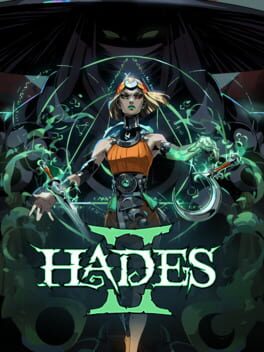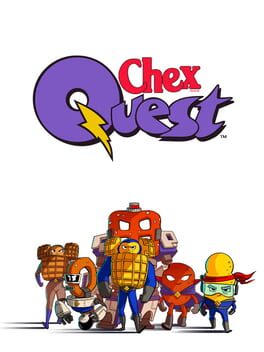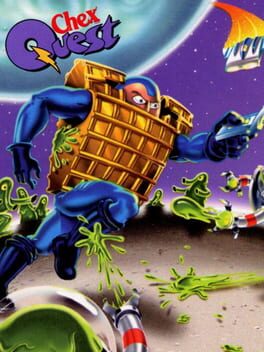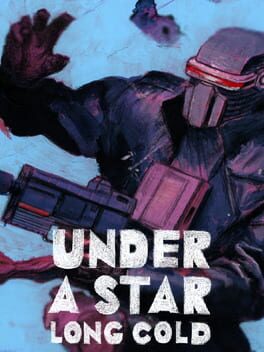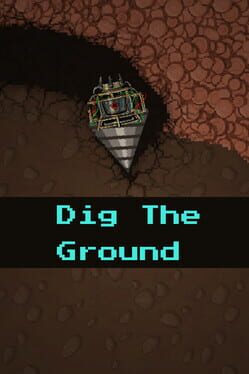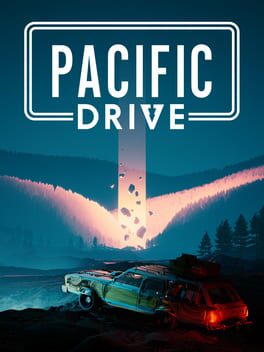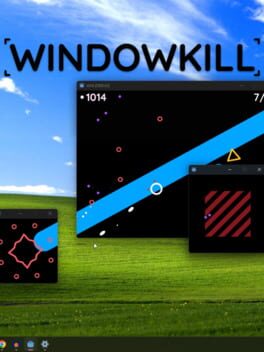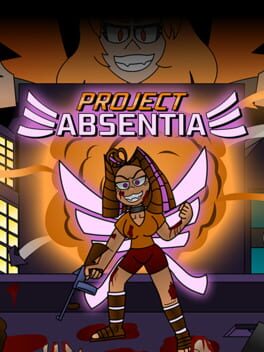JoeSchmoe
BACKER
2020
There are few things in gaming that I love more than stumbling upon an honest-to-god hidden gem. Vessels is a 2020 sci-fi horror narrative game where you play as the alien entity disguising itself as a crew member aboard a space vessel. Think The Thing, but less body horror. The game plays with the time loop by learning a little bit more about the ship, the crew, and their situation as time goes on and you're jettisoned out of the airlock. You start not even knowing your crewmates' names, but that all gets picked up in between deaths.
The core loop of the game is dialog and exploiting your crewmates' anxieties and shortcomings to get what you want, to get closer to releasing you from the quarantine airlock. You still maintain some sense of your former consciousness, but it's in parallel to this cosmic entity that feels akin to a fledgling god.
It's really fascinating stuff and I was gripped from start to finish. I think anyone with an interest in experimental game narratives and/or space horror would really enjoy their time here. Bear in mind – it's absolutely not a horror game, rather a dialog-driven adventure game with horror trappings and themings.
The best part is, the game's just $0.99 so it's one of the easiest recommendations I can make.
The core loop of the game is dialog and exploiting your crewmates' anxieties and shortcomings to get what you want, to get closer to releasing you from the quarantine airlock. You still maintain some sense of your former consciousness, but it's in parallel to this cosmic entity that feels akin to a fledgling god.
It's really fascinating stuff and I was gripped from start to finish. I think anyone with an interest in experimental game narratives and/or space horror would really enjoy their time here. Bear in mind – it's absolutely not a horror game, rather a dialog-driven adventure game with horror trappings and themings.
The best part is, the game's just $0.99 so it's one of the easiest recommendations I can make.
2024
Obviously still early, but I'm really loving this so far. Combat feels great and the expansions to your base abilities help to break up the flow from the first title and give you more varied tools to control groups and armored enemies. The snare in particular feels like an incredibly powerful piece of your arsenal to manage higher-threat mobs.
And of course, the music, art, and voice acting is all exactly as great as you'd expect from a Supergiant game. No surprises there.
It's still Early Access but this feels like a super easy recommendation to jump right in and get back into Hades
And of course, the music, art, and voice acting is all exactly as great as you'd expect from a Supergiant game. No surprises there.
It's still Early Access but this feels like a super easy recommendation to jump right in and get back into Hades
2024
Really quite good, often stunningly gorgeous, and endlessly stylish. Indika peddles in the phantasmagoric in its exploration of trauma, faith, and the loss thereof. Stunning landscapes are interspersed amongst hyper-surrealist industrial explorations of pre-revolution Russia.
Surely this can't be God's plan?
Indika is not exploring ideas that haven't been touched before, but I haven't come across many games that examine a fall from grace/faith in the way that Indika does, and certainly not as stylishly. Flourishes of color and dream-like hyperbole work their way into nearly every pivotal moment of the game's plodding structure. While the themes explored may not be groundbreaking, the aesthetics of their exploration are inarguably mature, particularly for the medium, doubly so for the fidelity at which Indika is rendered.
It is not hard to imagine this same game conceived as a low-poly low-res walking sim, exploring the same concepts and plot points. It is genuinely delightful to see a game that would be seen as extremely niche a few years ago be given such a grand budget to beautifully render its story in.
I could not help but think of Playdead's Inside and Limbo while playing this – Indika seems heavily inspired by those games' focus on atmosphere and tone, above all else. As such, I think the same folks that were frustrated by the somewhat rote puzzle-solving in either of the aforementioned games will probably grind their teeth during the similar puzzle sections here.
All in all, Indika is well worth the price of admission in its beauty alone. Expertly crafted environments that are further buoyed by gorgeous cinematography (the wolf water-wheel shot in particular mwah!).
Surely this can't be God's plan?
Indika is not exploring ideas that haven't been touched before, but I haven't come across many games that examine a fall from grace/faith in the way that Indika does, and certainly not as stylishly. Flourishes of color and dream-like hyperbole work their way into nearly every pivotal moment of the game's plodding structure. While the themes explored may not be groundbreaking, the aesthetics of their exploration are inarguably mature, particularly for the medium, doubly so for the fidelity at which Indika is rendered.
It is not hard to imagine this same game conceived as a low-poly low-res walking sim, exploring the same concepts and plot points. It is genuinely delightful to see a game that would be seen as extremely niche a few years ago be given such a grand budget to beautifully render its story in.
I could not help but think of Playdead's Inside and Limbo while playing this – Indika seems heavily inspired by those games' focus on atmosphere and tone, above all else. As such, I think the same folks that were frustrated by the somewhat rote puzzle-solving in either of the aforementioned games will probably grind their teeth during the similar puzzle sections here.
All in all, Indika is well worth the price of admission in its beauty alone. Expertly crafted environments that are further buoyed by gorgeous cinematography (the wolf water-wheel shot in particular mwah!).
2020
A 2020 HD remake of 1996's Chex Quest somehow feels even weirder a concept than the original pack-in. The transition to polygonal assets leaves the whole thing feeling kinda cheap, and sheds a lot of the naive innocence that the original exuded. That being said, it is interesting to see the levels reimagined with the allowance of layered verticality – an impossibility of the DOOM engine. The most fun I had with this was seeing how nearly 30-year-old levels had been tweaked and translated into a new engine while still trying to capture the spirit of the original. Unfortunately, only the first level and Arboretum really feel evocative of their predecessors. The other levels are just sorta generic industrial space venues, which, is pretty appropriate to the originals, but they don't feel like particularly great callbacks.
The levels aren't the only thing that suffered from the shift to 3D, though. The movement kinda feels like ass, with very little feedback and an awful acceleration lag when trying to sprint. The weapons, too, have little-to-no feedback and straight-up don't function like they should. The shotgun has no spread, the rocket launcher feels like there's no splash damage, and the plasma rifle's projectiles are incredibly slow. It's charming that they retain their original sound effects, but their referential inclusion spurs little more than a "huh, that's neat!" after first noticing.
Surprisingly, the best part of this game is the writing. They've really leaned into the corniness of this game's very existence, with Captain Fred Chexter slinging cheeseball one-liner after cheeseball one-liner. I think this gets the closest to capturing the spirit of the original, but it's a bright spot awash in a sea of mediocrity.
The levels aren't the only thing that suffered from the shift to 3D, though. The movement kinda feels like ass, with very little feedback and an awful acceleration lag when trying to sprint. The weapons, too, have little-to-no feedback and straight-up don't function like they should. The shotgun has no spread, the rocket launcher feels like there's no splash damage, and the plasma rifle's projectiles are incredibly slow. It's charming that they retain their original sound effects, but their referential inclusion spurs little more than a "huh, that's neat!" after first noticing.
Surprisingly, the best part of this game is the writing. They've really leaned into the corniness of this game's very existence, with Captain Fred Chexter slinging cheeseball one-liner after cheeseball one-liner. I think this gets the closest to capturing the spirit of the original, but it's a bright spot awash in a sea of mediocrity.
1996
Enjoying Chex Quest is not a celebration of its design. It’s not a celebration of expertly crafted combat arenas. It’s a piece of pack-in corporate advertisement for some incredibly mid cereal. And yet something about playing it today just feels so incredibly warm and cozy. The earnestness of its specific innocence is bordering on contagious. Health pickups are glasses of water and delicious plates of fruits and vegetables. The core drive of the plot is protecting the galaxy’s crops of fruits and veggies against the flemoids, a boogery slime-guy race that threatens your very way of life - and more importantly, threatens your access to a balanced breakfast.
Chex Quest really is just DOOM. The weapons behave the same and all have ZORCHer analogs (ZORCHing of course referring to teleporting the flemoids back to whence they came – gibbing the snot-dudes would be a no-no for your family-friendly game) - the shotgun teleporter, the minigun teleporter, the plasma gun teleporter, the rocket launcher teleporter (?). All of the weapons behave pretty much in lockstep with their DOOM counterparts, with the downside of having a significantly weaker system of weapon feedback. I guess that’s what happens when you switch out a bitchin’ super shotty for a non-descript teleporter.
Because of this, Chex Quest feels significantly worse than DOOM. I think this is most heavily felt in the third installment of the series, where the level design has had 10 years of DOOM modding to learn from, but it’s only a minor gripe in this first episode. Partly because of the novelty of its DOS-style hyper-saturated color palette and partly because of its runtime. It takes less than 20 minutes to beat this first Episode, and it never really sags from pacing issues.
Chex Quest is not a great game. It’s not a great DOOM wad. It’s not even particularly good. But it is perhaps one of the best examples of a phrase I’ve only ever used mockingly – good, clean fun.
Chex Quest really is just DOOM. The weapons behave the same and all have ZORCHer analogs (ZORCHing of course referring to teleporting the flemoids back to whence they came – gibbing the snot-dudes would be a no-no for your family-friendly game) - the shotgun teleporter, the minigun teleporter, the plasma gun teleporter, the rocket launcher teleporter (?). All of the weapons behave pretty much in lockstep with their DOOM counterparts, with the downside of having a significantly weaker system of weapon feedback. I guess that’s what happens when you switch out a bitchin’ super shotty for a non-descript teleporter.
Because of this, Chex Quest feels significantly worse than DOOM. I think this is most heavily felt in the third installment of the series, where the level design has had 10 years of DOOM modding to learn from, but it’s only a minor gripe in this first episode. Partly because of the novelty of its DOS-style hyper-saturated color palette and partly because of its runtime. It takes less than 20 minutes to beat this first Episode, and it never really sags from pacing issues.
Chex Quest is not a great game. It’s not a great DOOM wad. It’s not even particularly good. But it is perhaps one of the best examples of a phrase I’ve only ever used mockingly – good, clean fun.
2023
I really love a lot of Antonio Freyre’s work but my praise is almost always laden with caveats. More often than not, I find his aesthetic stylings, atmosphere, and world design to be top-notch. Evocative dystopias that are, unfortunately, often accompanied by so-so gameplay or mechanical design. It Comes in Waves sidesteps that criticism by being mechanically light – a walking sim with small hiccups of action and blaster-fire. These bouts are largely there to provoke engagement in the systems: avoid taking damage to avoid water depletion to avoid dying of thirst to avoid losing the game. The ever-looming threat of perma-death gives the whole affair just enough teeth to keep you on your toes, even though the actual trials you face never really give you a run for your money. In my playthrough, I was never particularly close to being in danger, but the theoretical threat was enough to keep my eyes peeled for discarded reserves of H2O.
I’ve seen criticism levied at the game as being boring - the aforementioned dances with combat being too brief and too widely interspersed. I understand the sentiment, but I don’t think the systems could bear the load of the combat if left open and exposed. As-is, you don’t typically get enough time in each fight to dwell on the AI’s shortcomings, the lack of impact, the weirdly inconsequential stats assigned to the various guns you come across. The game is, fundamentally, a walking sim with some third-person-shooter elements, which leaves it a lot stronger than as a third-person-shooter with walking sim elements.
These gaps between combat also help accentuate the emptiness of the desert, an emptiness that feels utterly meditative. This emptiness ends up allowing your focus to wonder to the massive surreal monoliths dotted around your journey. These towering statues, giant skeletal remains, and rivers of blood (?) are further emphasized by a map which doesn’t track the player’s position, forcing you to orient yourself based on cryptic markers and their accompanying landmarks. The end result is a world which embeds itself in the mind, with features that feel like abstract representations of sick-as-hell concept art.
Best of all, your meditative wanderings through the wastes are capped off with a brief, delicate ending – one that recontextualizes and warms everything you’ve done for the last 30 minutes. It’s not over-poetic, it’s not saccharine. It’s just nice, and perfectly serves the game.
I’ve seen criticism levied at the game as being boring - the aforementioned dances with combat being too brief and too widely interspersed. I understand the sentiment, but I don’t think the systems could bear the load of the combat if left open and exposed. As-is, you don’t typically get enough time in each fight to dwell on the AI’s shortcomings, the lack of impact, the weirdly inconsequential stats assigned to the various guns you come across. The game is, fundamentally, a walking sim with some third-person-shooter elements, which leaves it a lot stronger than as a third-person-shooter with walking sim elements.
These gaps between combat also help accentuate the emptiness of the desert, an emptiness that feels utterly meditative. This emptiness ends up allowing your focus to wonder to the massive surreal monoliths dotted around your journey. These towering statues, giant skeletal remains, and rivers of blood (?) are further emphasized by a map which doesn’t track the player’s position, forcing you to orient yourself based on cryptic markers and their accompanying landmarks. The end result is a world which embeds itself in the mind, with features that feel like abstract representations of sick-as-hell concept art.
Best of all, your meditative wanderings through the wastes are capped off with a brief, delicate ending – one that recontextualizes and warms everything you’ve done for the last 30 minutes. It’s not over-poetic, it’s not saccharine. It’s just nice, and perfectly serves the game.
A Star Long Cold aims to blend Antonio Freyre's previous No Sun to Worship and It Comes In Waves – unfortunately, it lacks the concise brevity of the former and the meditative emptiness of the latter. I don't think it's a bad game – I love the atmosphere and the visual style, I just don't think the core gameplay loop coalesces into something that I feel compelled to return to after a few runs.
I've seen folks talk of this game as superior to It Comes In Waves by virtue of sidestepping its extended periods of nothingness, but the action of Under A Star Long Cold often feels more vacuous than the literal emptiness of It Comes In Waves's desert.
It's worth checking out as a fan of Freyre's work, and as mentioned – it's extremely successful stylistically. I just wish I liked pretty much anything else about it.
High Score of $26,580/$50,000
I've seen folks talk of this game as superior to It Comes In Waves by virtue of sidestepping its extended periods of nothingness, but the action of Under A Star Long Cold often feels more vacuous than the literal emptiness of It Comes In Waves's desert.
It's worth checking out as a fan of Freyre's work, and as mentioned – it's extremely successful stylistically. I just wish I liked pretty much anything else about it.
High Score of $26,580/$50,000
2024
It's a free game, so it's hard to complain too much, but the incessant design of just go deeper starts to feel tedious, even in the game's hour-or-so runtime. This seems like a game that I would've loved as a flash game 15 years ago, but it doesn't materialize into something I feel compelled to recommend now.
2024
Pacific Drive is a new game that’s basically Stalker… with a station wagon. And brother, lemme tell ya, you’re gonna love the way you look in this wagon.
This beauty’s gonna be your lifeblood as you explore the mysterious post-apocalypse (??) of the Pacific Northwest, raiding gas stations, research bases, and derelict shacks for everything from fabric scraps to plasma canisters, which you’re going to use to craft upgrades and repair kits for yourself, but more importantly - your car.
See, when you first start, your car’s going to be a piece of shit. You’ll be trying your best to drive through overgrown pacific forests on spare tires and hope, with your body panels literally being held together by duct tape. But as you go further and further on, you’ll be replacing these shoddy components with rugged off-road tires, armored bumpers, roof racks, literal jump-jets, and electric coils to blast off anything that might cling to your car.
Because that’s another thing - you’re not just moseying around out there in the forest and small towns with you and your car. You’re doing all that while dodging a heaping helping of anomalies - ranging from helpful repair critters to devastating buzz-saws and creepy exploding mannequins. These anomalies are well-and-good as you’re looting, but everything ramps up to 11 when it’s time to extract - by the way, did I mention this is an extraction looter? Anyways - when you’re extracting, you’re opening up a temporal portal to warp you back to homebase, and the new denizens of the forest don’t like that. So now, you’re on a timer, screaming over hills and ditches, down mountains, all the while trying to avoid anomalous ley lines that hurl you up into the sky if you touch them, or abducting machine-beasts that will try to steal your car with you inside of it. It’s a white-knuckled exciting thrill-ride that turns the slow methodical looting leading up to it on its head.
When you finally get back to base, you’ll be given a chance to use your hard-earned loot to upgrade your car, as mentioned, but you’ll also get the chance to diagnose some… quirks… that your car develops in the Zone. See, your car is sort of anomaly itself, so sometimes you’ll get little mechanics gremlins that are simple - everytime you shut your trunk, the car beeps. Small, endearing foibles that feel like honest-to-god quirks you’d expect from an old well-loved car. But then you’ll get more.. Anomalous quirks. Stuff like, whenever you turn on your windshield wiper your car jumps upwards into the air, or when you turn the steering wheel to the left, your gas pedal slams to the floor.
These quirks are probably my favorite system in the game, because they’re developing while you’re in the zone. So you could be three sectors deep into your run before realizing that whenever you turn your headlights on, your car shuts off - so you augment your behavior around that newfound quirk. The best part, is that a lot of the time you’re not going to immediately realize what’s occurred. You’re probably just going to think - huh, that’s weird, why does my car keep cutting off? That’s because in order to fix the issue, you need to actually diagnose it first. You need to know that, not only your car is shutting off, but WHY it’s shutting off - what action is triggering it.
I know I’ve spent a healthy portion of this short review raving about this system, but I genuinely think that it’s such an awesome way to tie the gameplay into the feeling of owning and keeping an old beater car running. You develop a real attachment to the car as you’re tinkering with it, painting it, and fixing it up when it starts to buckle. It’s a system that works waaay better than I was expecting it to, which is a good thing, because the game’s best qualities sorta stop and end with the car and your interactions with it.
Looting the abandoned buildings and research stations is pretty dull, to be honest. They’re the same buildings, and nothing really changes, except for where the toolboxes are. For huge portions of the game, there’s basically nothing to threaten you while you’re on foot, so you’re just doing busywork gathering materials before getting back to your car. And it’s fun for awhile, gathering stuff that you know is going to be pumped into meaningful upgrades. But the abstraction of materials to plastics, scrap metal, rubber, etc means that you’re kind of just making the numbers go up. It’s not a strictly bad thing, and it seems clear that the game is doing this to further its ambitions to create something that isn’t another extraction shooter, but some small part of me can’t help but pine after this with an extra layer of imm-sim shooter spread over it.
With that small quibble aside, I really can’t recommend Pacific Drive enough. It’s a fantastic game that had me one-more-running well into the night.
This beauty’s gonna be your lifeblood as you explore the mysterious post-apocalypse (??) of the Pacific Northwest, raiding gas stations, research bases, and derelict shacks for everything from fabric scraps to plasma canisters, which you’re going to use to craft upgrades and repair kits for yourself, but more importantly - your car.
See, when you first start, your car’s going to be a piece of shit. You’ll be trying your best to drive through overgrown pacific forests on spare tires and hope, with your body panels literally being held together by duct tape. But as you go further and further on, you’ll be replacing these shoddy components with rugged off-road tires, armored bumpers, roof racks, literal jump-jets, and electric coils to blast off anything that might cling to your car.
Because that’s another thing - you’re not just moseying around out there in the forest and small towns with you and your car. You’re doing all that while dodging a heaping helping of anomalies - ranging from helpful repair critters to devastating buzz-saws and creepy exploding mannequins. These anomalies are well-and-good as you’re looting, but everything ramps up to 11 when it’s time to extract - by the way, did I mention this is an extraction looter? Anyways - when you’re extracting, you’re opening up a temporal portal to warp you back to homebase, and the new denizens of the forest don’t like that. So now, you’re on a timer, screaming over hills and ditches, down mountains, all the while trying to avoid anomalous ley lines that hurl you up into the sky if you touch them, or abducting machine-beasts that will try to steal your car with you inside of it. It’s a white-knuckled exciting thrill-ride that turns the slow methodical looting leading up to it on its head.
When you finally get back to base, you’ll be given a chance to use your hard-earned loot to upgrade your car, as mentioned, but you’ll also get the chance to diagnose some… quirks… that your car develops in the Zone. See, your car is sort of anomaly itself, so sometimes you’ll get little mechanics gremlins that are simple - everytime you shut your trunk, the car beeps. Small, endearing foibles that feel like honest-to-god quirks you’d expect from an old well-loved car. But then you’ll get more.. Anomalous quirks. Stuff like, whenever you turn on your windshield wiper your car jumps upwards into the air, or when you turn the steering wheel to the left, your gas pedal slams to the floor.
These quirks are probably my favorite system in the game, because they’re developing while you’re in the zone. So you could be three sectors deep into your run before realizing that whenever you turn your headlights on, your car shuts off - so you augment your behavior around that newfound quirk. The best part, is that a lot of the time you’re not going to immediately realize what’s occurred. You’re probably just going to think - huh, that’s weird, why does my car keep cutting off? That’s because in order to fix the issue, you need to actually diagnose it first. You need to know that, not only your car is shutting off, but WHY it’s shutting off - what action is triggering it.
I know I’ve spent a healthy portion of this short review raving about this system, but I genuinely think that it’s such an awesome way to tie the gameplay into the feeling of owning and keeping an old beater car running. You develop a real attachment to the car as you’re tinkering with it, painting it, and fixing it up when it starts to buckle. It’s a system that works waaay better than I was expecting it to, which is a good thing, because the game’s best qualities sorta stop and end with the car and your interactions with it.
Looting the abandoned buildings and research stations is pretty dull, to be honest. They’re the same buildings, and nothing really changes, except for where the toolboxes are. For huge portions of the game, there’s basically nothing to threaten you while you’re on foot, so you’re just doing busywork gathering materials before getting back to your car. And it’s fun for awhile, gathering stuff that you know is going to be pumped into meaningful upgrades. But the abstraction of materials to plastics, scrap metal, rubber, etc means that you’re kind of just making the numbers go up. It’s not a strictly bad thing, and it seems clear that the game is doing this to further its ambitions to create something that isn’t another extraction shooter, but some small part of me can’t help but pine after this with an extra layer of imm-sim shooter spread over it.
With that small quibble aside, I really can’t recommend Pacific Drive enough. It’s a fantastic game that had me one-more-running well into the night.
2023
A deeply beautiful and painful rumination on queer trauma and stewardship. A 20-minute sob-fest accompanied by some perfectly-fitting music and visuals. I'm not trans but it feels deeply relatable across the queer spectrum, and I cannot recommend it highly enough if you're in a space that can stomach some of the pain of its writing.
Magnificent.
Magnificent.
2023
Holy shit, easily one of the most technically impressive games I've played in months. The first game to make me audibly "What?!" "That's insane!" since Viewfinder, and honestly I think I was more gutturally impressed by this. It's quite difficult for my ape brain to manage, with multi-tasking being the name of the game, but it's such an exciting premise I cannot wait to see what else is done with it.
2022
Another solid entry into the standalone GZDoom canon – sporting a flash-core Newgrounds aesthetic and some Build Engine sensibilities. Movement feels really good and pronounced, with the game immediately showing its hand of a MASSIVE jump and glide paired with an under-utilized airdash.
This jump and glide get a lot of mileage out of the combat design and arenas though, with large open areas filled to the brim with projectile-spewing enemies. The best choice of avoiding their attacks being bunnyhopping and gliding around.
Some of the specifics of the level-design feel a little unsophisticated in sections, especially when contrasted with the EXCELLENT work being done in the DOOM mapping community, but the team is bringing on community mappers and I'm extremely excited to see what unfolds in Episode 2.
This jump and glide get a lot of mileage out of the combat design and arenas though, with large open areas filled to the brim with projectile-spewing enemies. The best choice of avoiding their attacks being bunnyhopping and gliding around.
Some of the specifics of the level-design feel a little unsophisticated in sections, especially when contrasted with the EXCELLENT work being done in the DOOM mapping community, but the team is bringing on community mappers and I'm extremely excited to see what unfolds in Episode 2.
2024
Another solid entry into the first-person speedrunning 3D platformers (a la SEUM, Lovely Planet, Neon White, etc.). Some of the "kill all of the enemy" levels feel a bit clunky in the grand flow of the game but when the levels work and you're wallrunning, sliding, and dropkicking your way through hell and an urban environment - the game really sings. I love the opportunity for shortcuts to really cut down on times, and I'm excited to see how bonkers speedruns of this game get.
One thing to note, there's some weird performance issues on my system at the moment, with pretty poor optimization with a 3070 and i7-10700. Running on High (not even Epic), there are levels that chug below 30fps for no apparent reason. I expect that these issues will be ironed out but I think it's worth mentioning regardless
One thing to note, there's some weird performance issues on my system at the moment, with pretty poor optimization with a 3070 and i7-10700. Running on High (not even Epic), there are levels that chug below 30fps for no apparent reason. I expect that these issues will be ironed out but I think it's worth mentioning regardless
2021
2020
I wrapped the campaign on this retro-FPS yesterday and am pretty torn on the whole package. It was clearly initially inspired by DOOM 2016, but seems to evolve into its own thing by the end of it. Level design is extremely inconsistent throughout, with the first 10 or so levels being quite dull before opening up to some genuinely great Tech Bases. Early on in their development, the team picked up Dragonfly, a very well-regarded DOOM mapper to work on levels. I don't know the level breakdown, but there's such a stark shift in map quality about a third of the way in that I wouldn't be surprised if that's where Dragonfly stepped in and took the reins.
Unfortunately Prodeus kinda fumbles a bit towards the end, with a weird insistence on swapping out actual ammo pickups in later levels with little pads that just passively refill your ammo infinitely? I really don't like this change, as it basically means that you can use your rocket launcher/grenade launcher or any other scarce-ammo weapon to your hearts content in the back stretch. If used sparingly - this could've been a cool cathartic moment, but unfortunately it just comes across as kinda bland.
My other big gripe with the game is the enemy roster and encounter design. They do better towards the end of the game, but on Normal difficulty, the encounters are never protracted enough to make them feel worthwhile. Their idea of ambushes throughout the whole campaign is dropping a few Imp-equivalents and calling it a day. It's just super limp. They borrow almost their entire enemy roster from DOOM, but I don't think they do as good a job of differentiating enemy roles as was done in their inspiration. In DOOM, every enemy type serves a very specific purpose, and they just never realize that in Prodeus.
Also, this is a minor gripe, but the dynamic music paired with short encounters means that tracks almost ALWAYS end too soon. It's WEIRD. Other than that, the game's presentation is great. It looks phenomenal - I really like the chunky pixel look they have going, and while it definitely suffers from visual clarity, the ways that enemies explode like viscera balloons is immensely satisfying in the moment.
Overall, it's a better game than it initially appears, but really doesn't stick the landing. I probably wouldn't recommend it to folks that aren't genre diehards, but I'd be lying if I said I wasn't excited for the upcoming DLC
Unfortunately Prodeus kinda fumbles a bit towards the end, with a weird insistence on swapping out actual ammo pickups in later levels with little pads that just passively refill your ammo infinitely? I really don't like this change, as it basically means that you can use your rocket launcher/grenade launcher or any other scarce-ammo weapon to your hearts content in the back stretch. If used sparingly - this could've been a cool cathartic moment, but unfortunately it just comes across as kinda bland.
My other big gripe with the game is the enemy roster and encounter design. They do better towards the end of the game, but on Normal difficulty, the encounters are never protracted enough to make them feel worthwhile. Their idea of ambushes throughout the whole campaign is dropping a few Imp-equivalents and calling it a day. It's just super limp. They borrow almost their entire enemy roster from DOOM, but I don't think they do as good a job of differentiating enemy roles as was done in their inspiration. In DOOM, every enemy type serves a very specific purpose, and they just never realize that in Prodeus.
Also, this is a minor gripe, but the dynamic music paired with short encounters means that tracks almost ALWAYS end too soon. It's WEIRD. Other than that, the game's presentation is great. It looks phenomenal - I really like the chunky pixel look they have going, and while it definitely suffers from visual clarity, the ways that enemies explode like viscera balloons is immensely satisfying in the moment.
Overall, it's a better game than it initially appears, but really doesn't stick the landing. I probably wouldn't recommend it to folks that aren't genre diehards, but I'd be lying if I said I wasn't excited for the upcoming DLC

